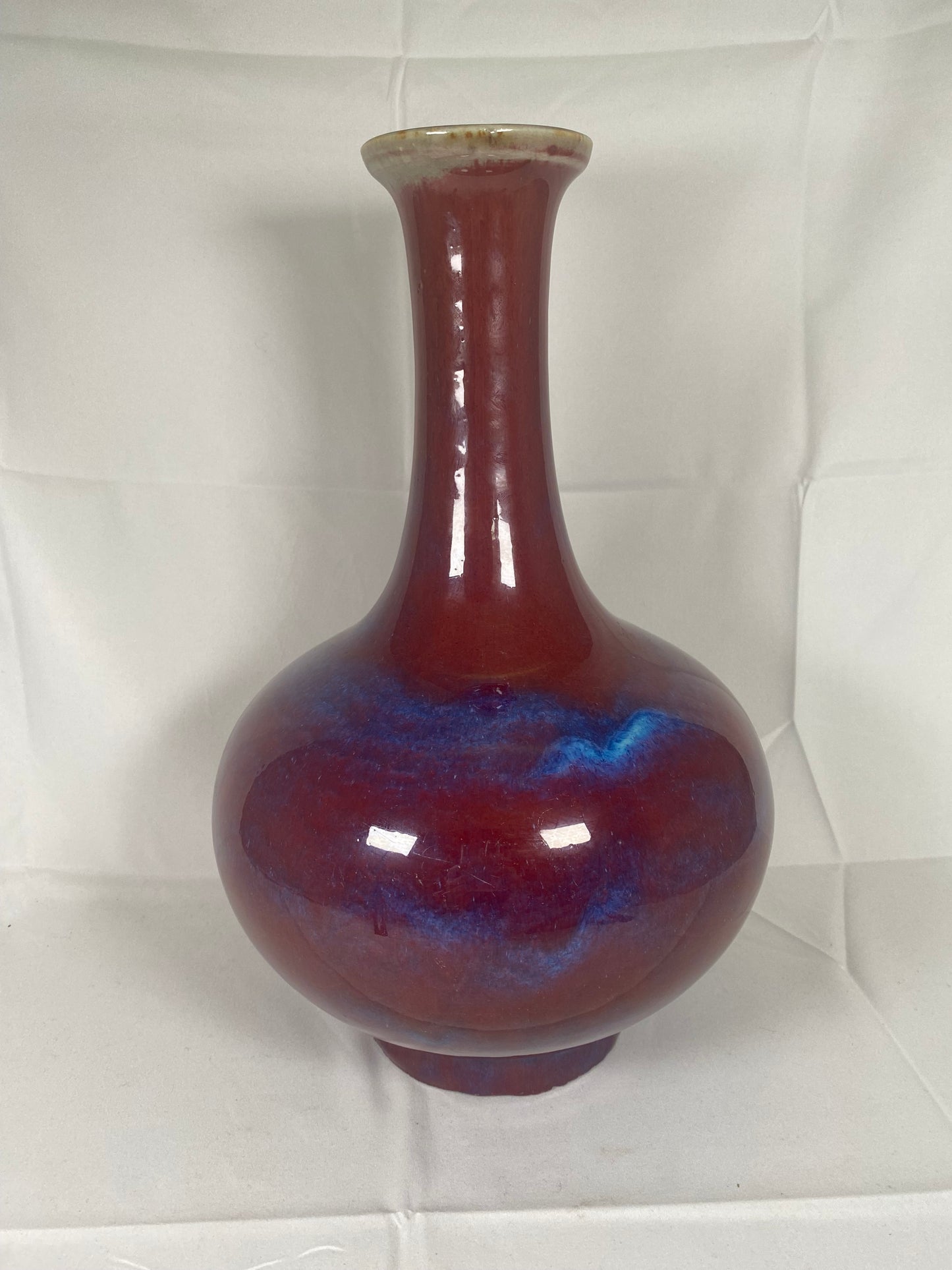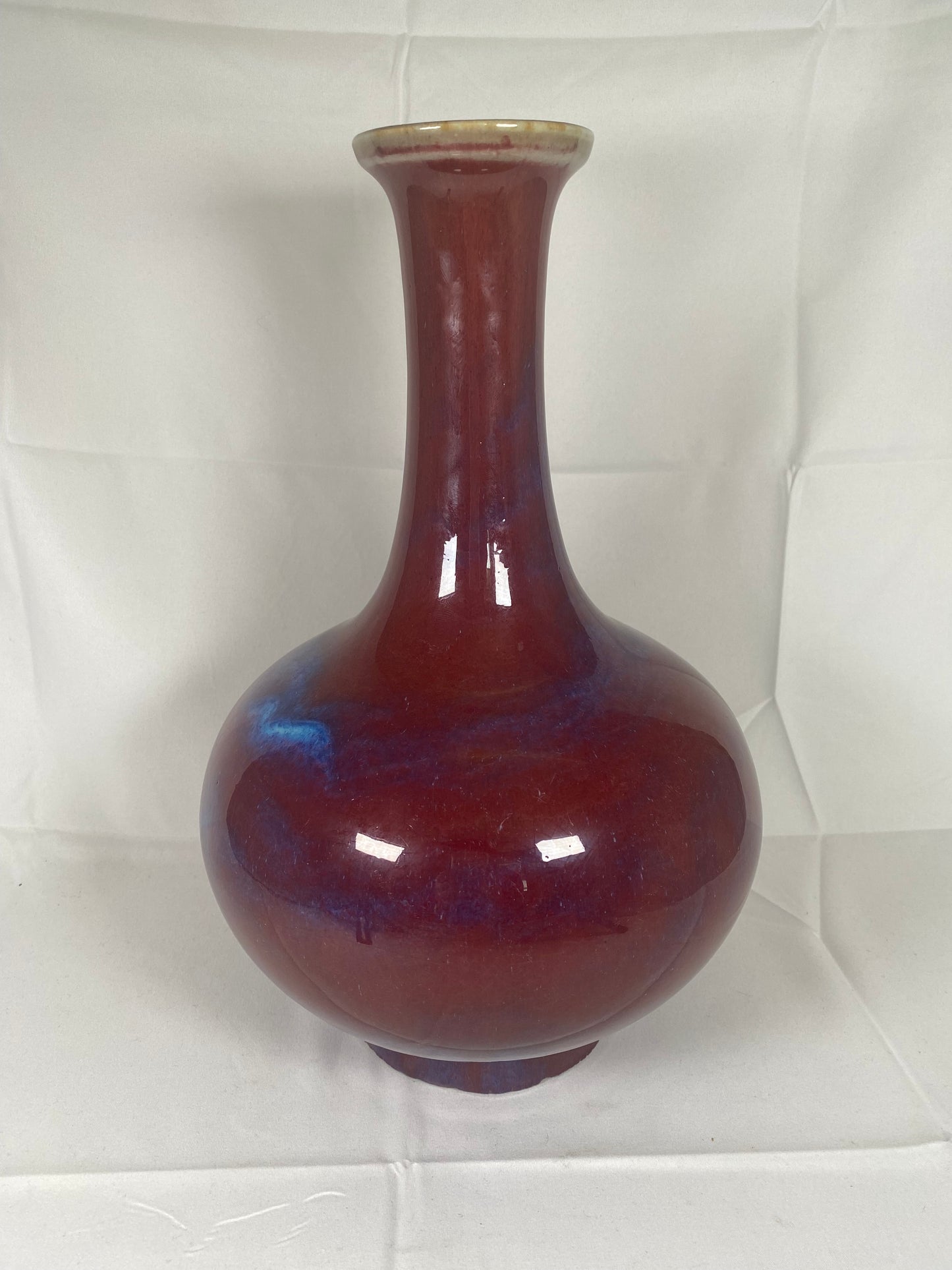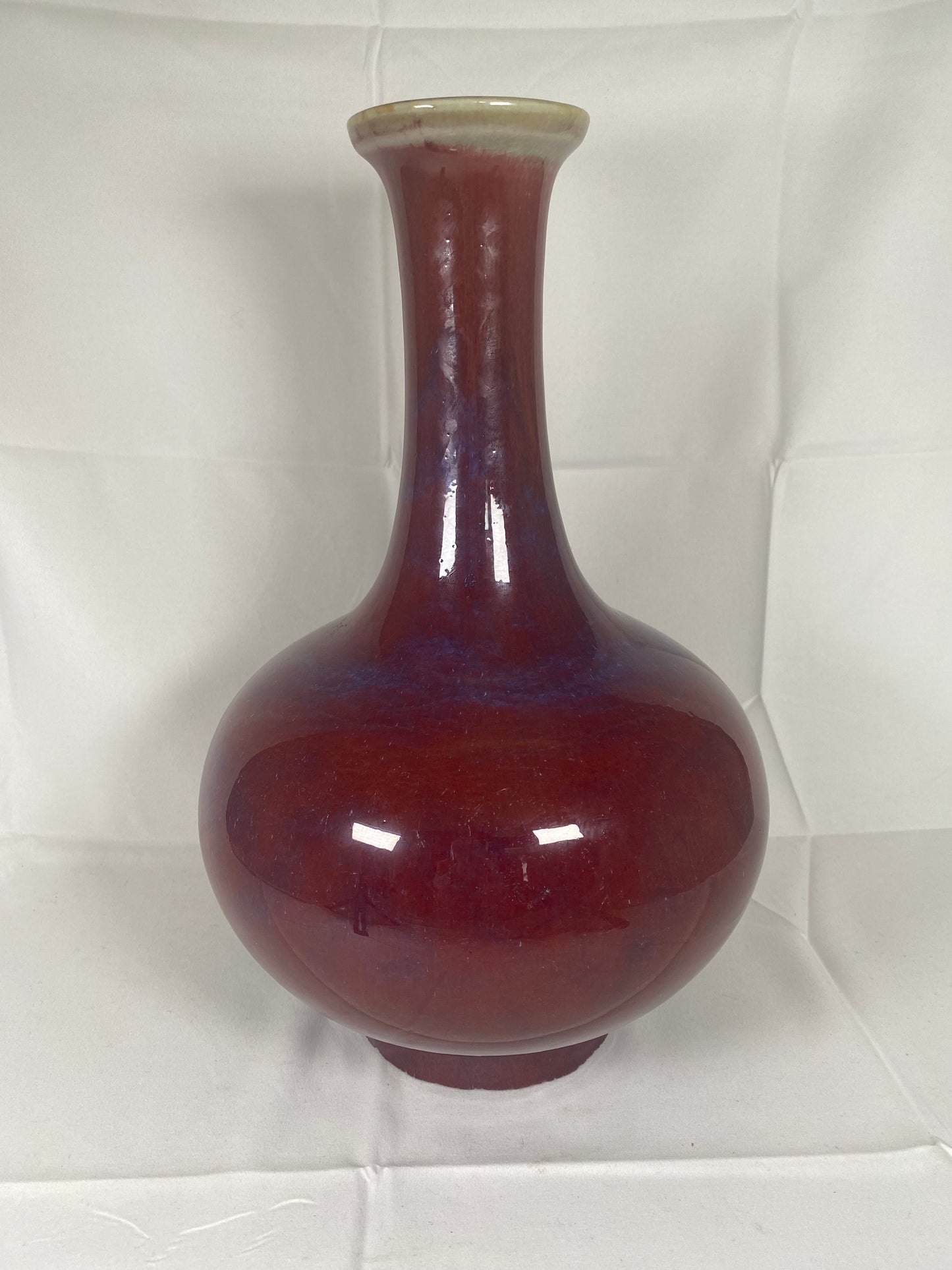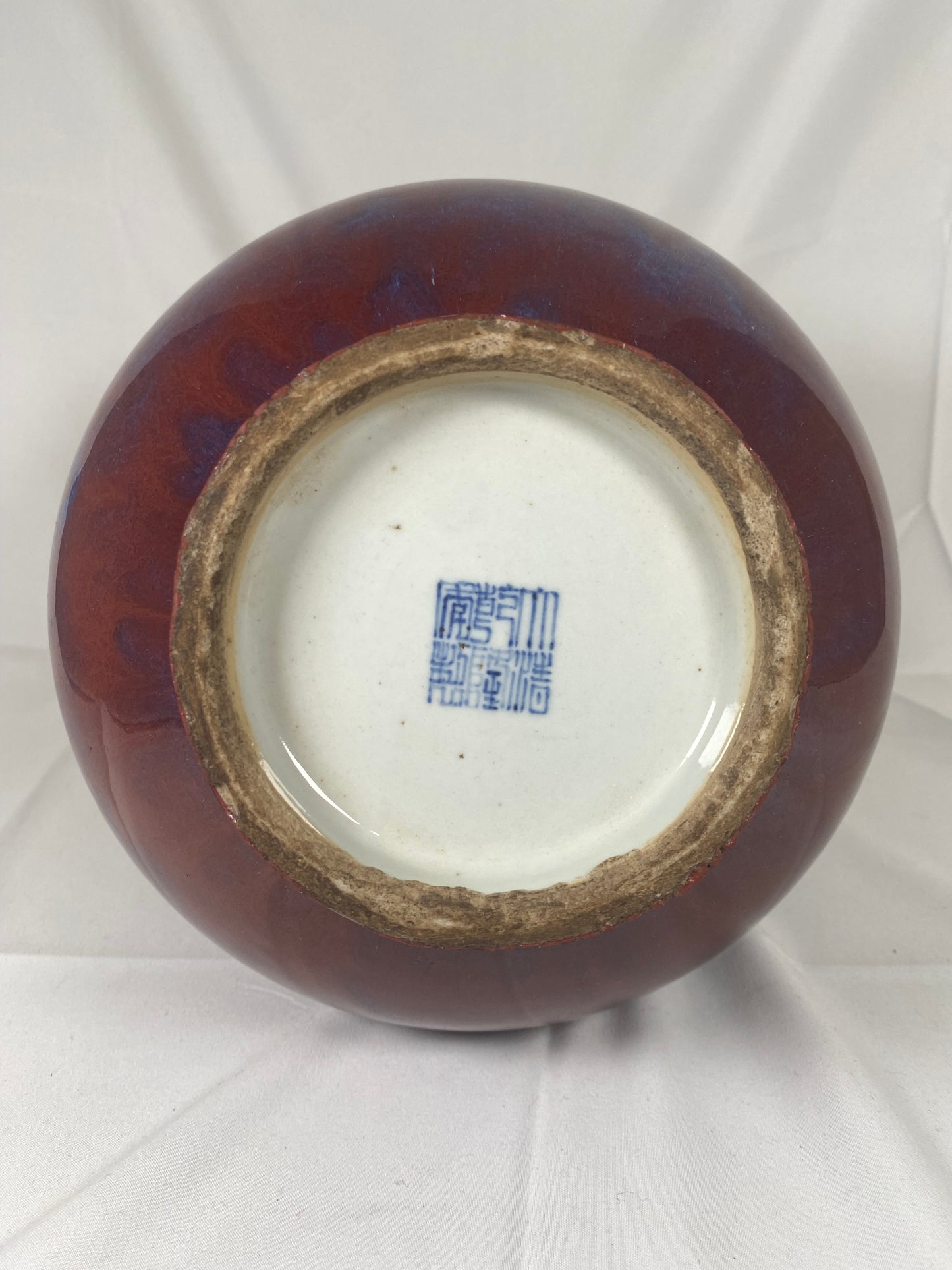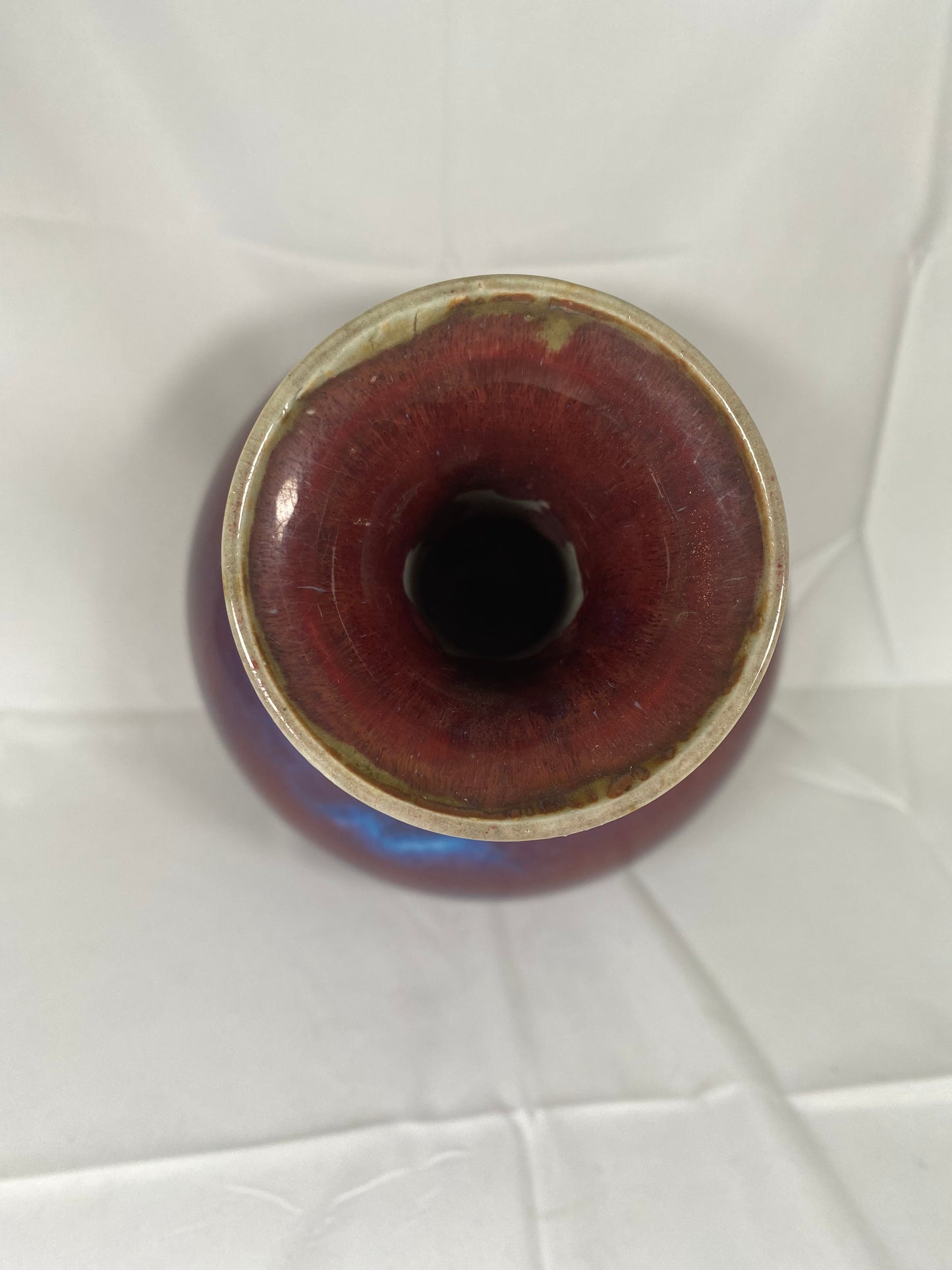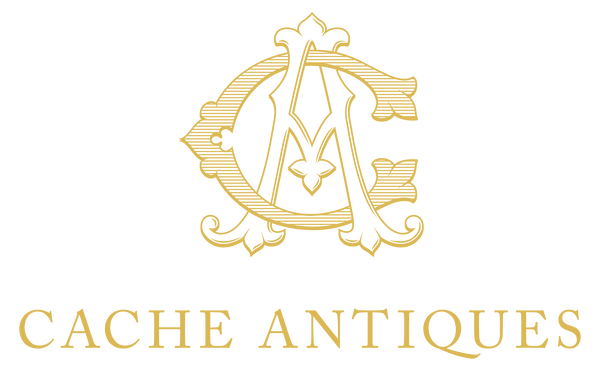cacheantiquessydney
19th century Chinese Jun kiln style Sang de Boeuf or Oxblood Flambe Glaze Vase
19th century Chinese Jun kiln style Sang de Boeuf or Oxblood Flambe Glaze Vase
Regular price
$1,503.00 USD
Regular price
Sale price
$1,503.00 USD
Unit price
per
Shipping calculated at checkout.
Couldn't load pickup availability
Words fail to do this really exceptional 19th century sang de boeuf or oxblood glaze vase justice.
With sang de boeuf glazes the most important factors are the colouration and the form. This bottle-form style is highly desirable and the 'flashpoint blue' glaze is what immediately puts this into the top tier of flambe glaze vases.
The sheer difficulty of being able to achieve the blue effects made this particular colouration extremely desirable in the 19th century and remains so today.
Flambe glazes, termed "sang-de-boeuf" (ox blood) were in use by the Chinese from the 11th century, and the effect was achieved by using copper oxide as a colouring agent and firing the object in a reducing atmosphere. Without modern technology, potters had to depend on both skill and luck to achieve this effect. In the 18th century the red glaze often accumulated on the shoulders of vases and bowls, reproducing the effect of coagulated blood. Sometimes the glaze was often slightly streaked, or included blue bleeds. Wares with these features were prized by collectors in the 19th century. European potters were not able to master the technique until the early 20th century.
Vases of this shape, size and colouration are extremely desirable; in the European market often selling for thousands of Euros, and a reputable dealer priced a similar piece at £ 1950.
Price marked at AUD$2200.
Measurements:
https://www.timothylangston.com/shop/objects/vases/a-19th-century-sang-de-boeuf-porcelain-vase/
With sang de boeuf glazes the most important factors are the colouration and the form. This bottle-form style is highly desirable and the 'flashpoint blue' glaze is what immediately puts this into the top tier of flambe glaze vases.
The sheer difficulty of being able to achieve the blue effects made this particular colouration extremely desirable in the 19th century and remains so today.
Flambe glazes, termed "sang-de-boeuf" (ox blood) were in use by the Chinese from the 11th century, and the effect was achieved by using copper oxide as a colouring agent and firing the object in a reducing atmosphere. Without modern technology, potters had to depend on both skill and luck to achieve this effect. In the 18th century the red glaze often accumulated on the shoulders of vases and bowls, reproducing the effect of coagulated blood. Sometimes the glaze was often slightly streaked, or included blue bleeds. Wares with these features were prized by collectors in the 19th century. European potters were not able to master the technique until the early 20th century.
Vases of this shape, size and colouration are extremely desirable; in the European market often selling for thousands of Euros, and a reputable dealer priced a similar piece at £ 1950.
Price marked at AUD$2200.
Measurements:
32cm high. Approx 20cm across at widest point.
Condition: Excellent antique condition. It should be noted that vases produced in the 19th century with this glaze often have a rough bottom rim as ours does, and kiln speckling, minor firing imperfections and uneven glaze are all commensurate with antique flambe glaze ware.
https://www.timothylangston.com/shop/objects/vases/a-19th-century-sang-de-boeuf-porcelain-vase/
Shipping & Returns
Shipping & Returns
